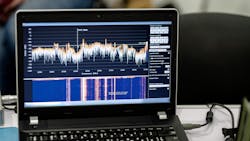Preventing Intentional EMI—aka Sabotage (Download)
Before we can define intentional electromagnetic interference (IEMI), which will also be referred to as “sabotage” in this article, let’s begin by characterizing electromagnetic waves.
A mechanical wave can be defined as a vibration or disturbance in matter through some medium (such as a solid, liquid, gas, or plasma). Sound waves occurring in the air are mechanical waves.
A changing magnetic field induces a changing electric field and vice versa—these two are linked. The two changing fields ultimately will form electromagnetic waves. Electromagnetic waves aren’t like mechanical waves; they don’t need a medium to propagate. Thus, electromagnetic waves have the ability to travel not just through air and solid materials, but through the vacuum of space as well.
